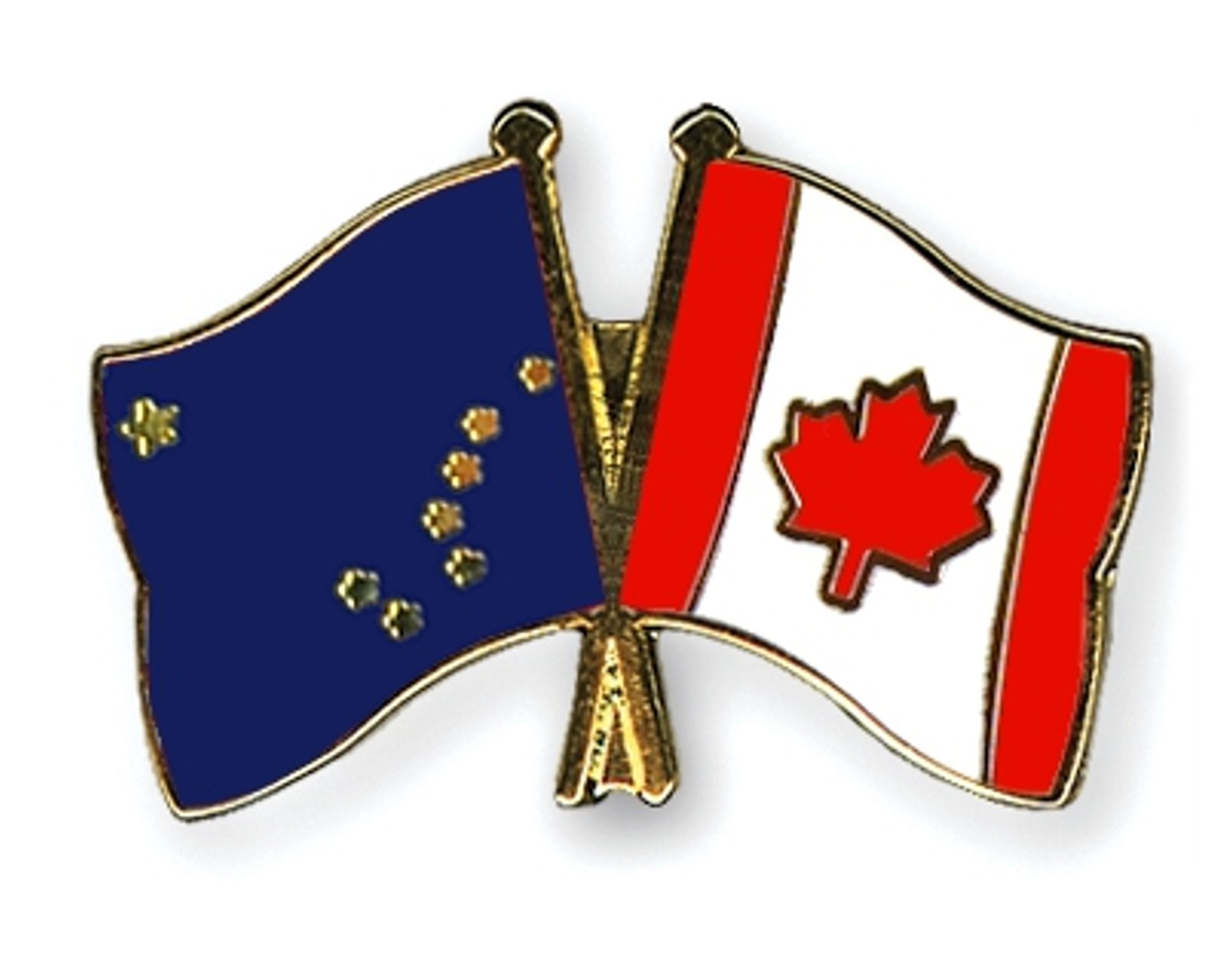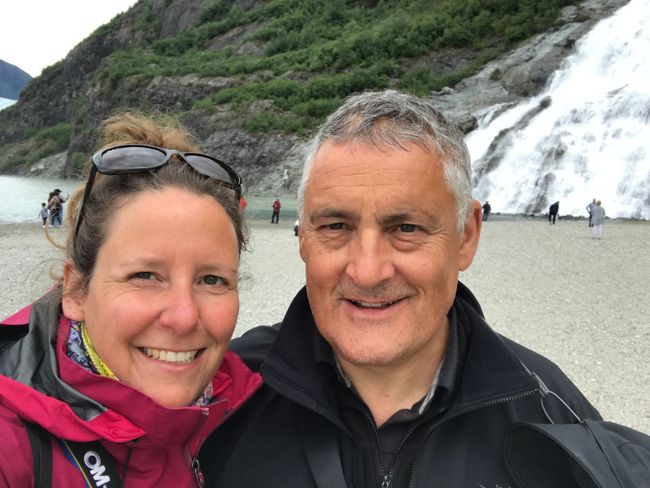The Icefields Parkway and Yoho NP
Published: 18.09.2018
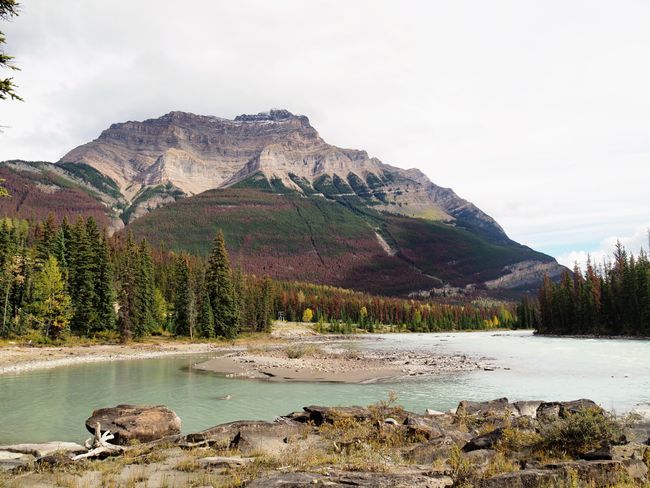
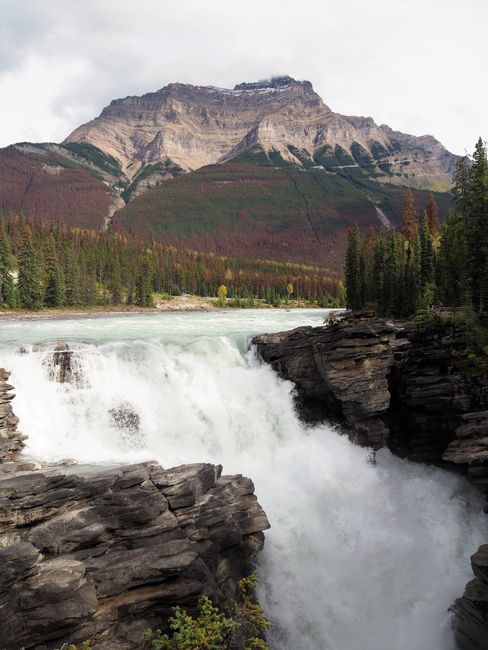
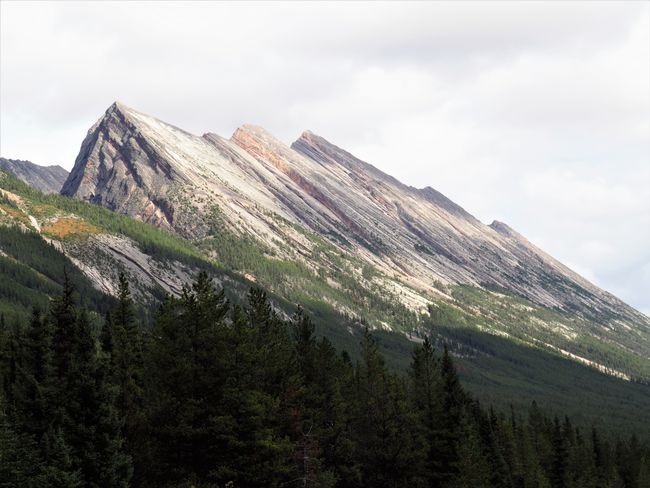
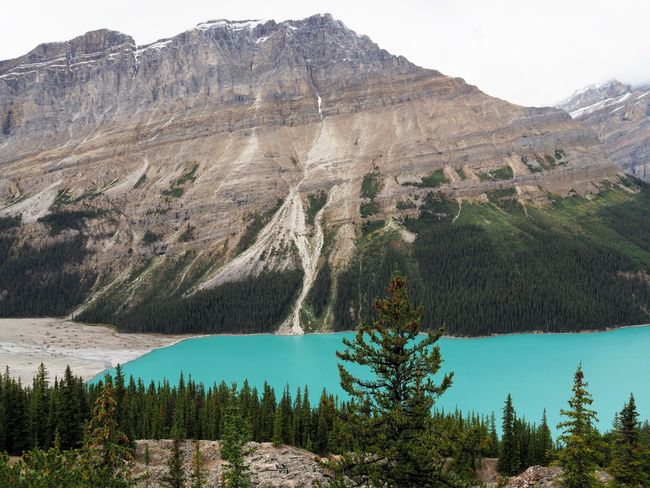
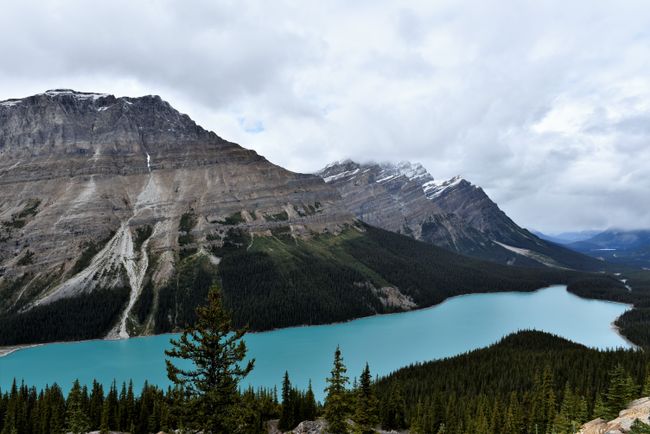
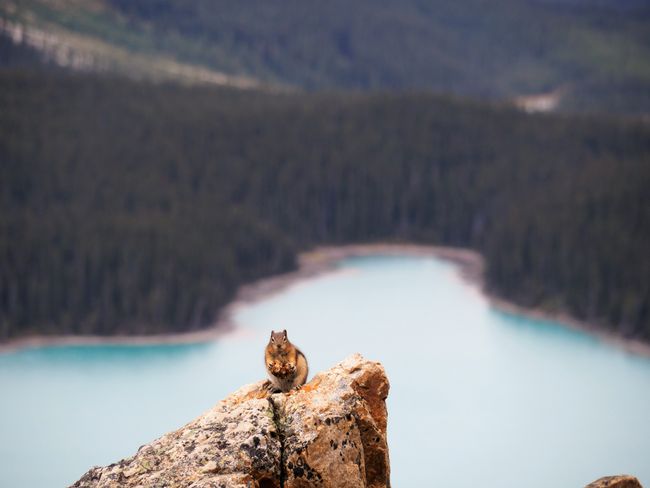
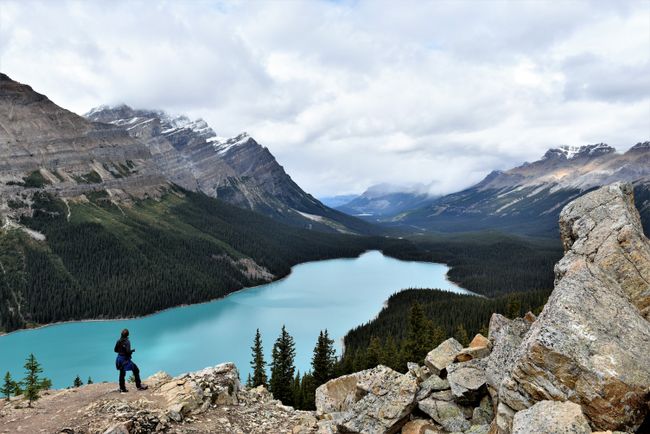
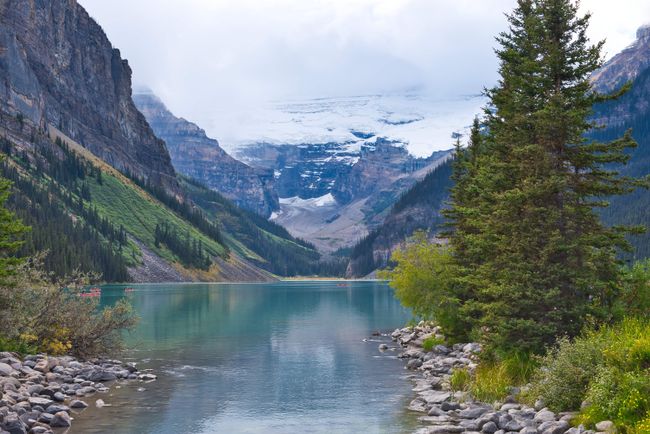
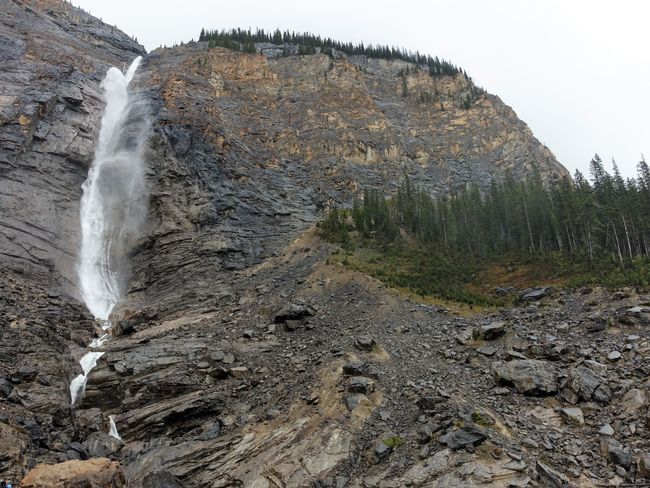
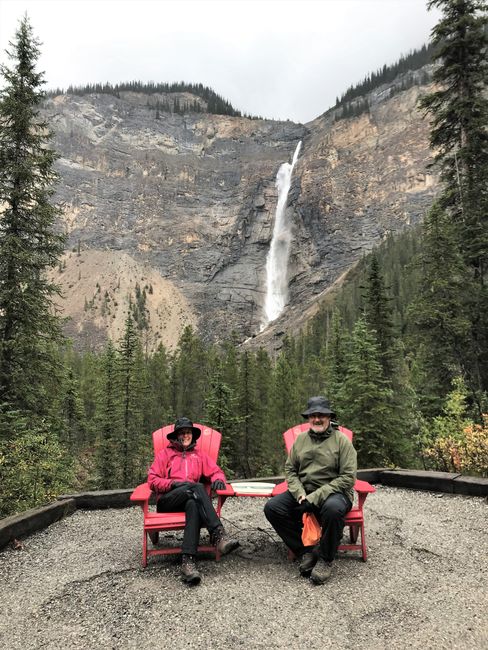
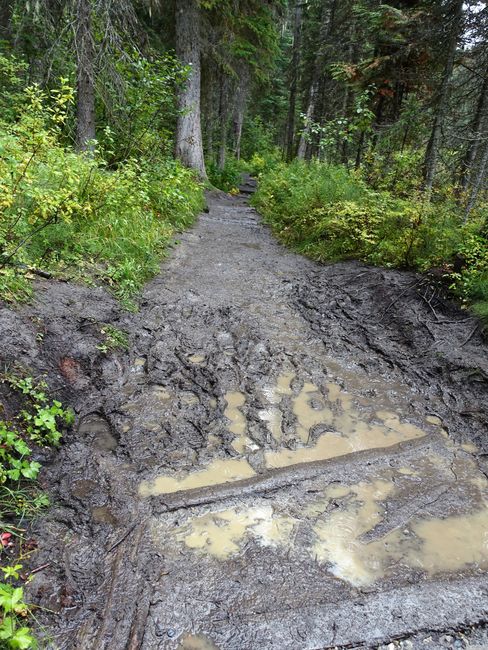
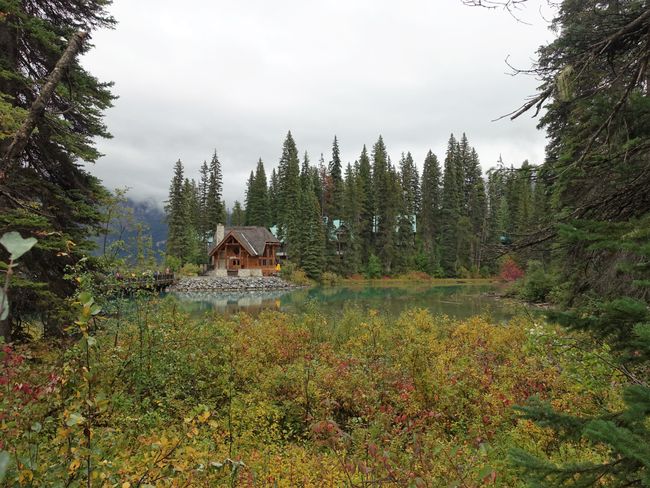
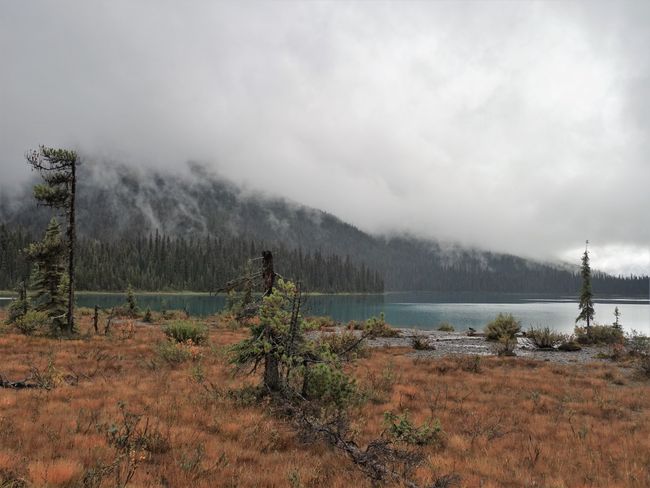
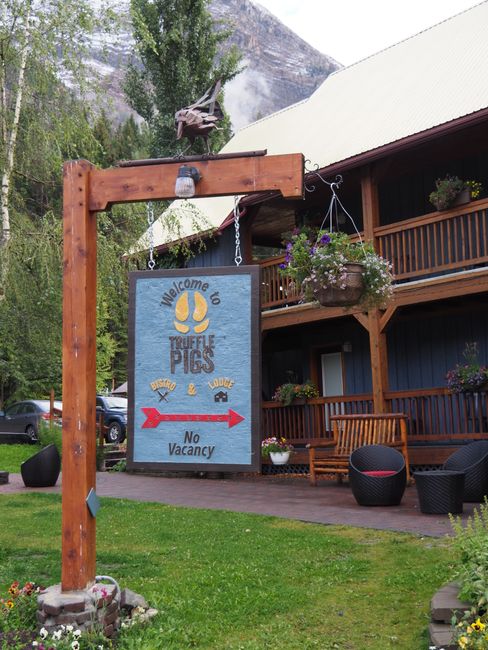
Subscribe to Newsletter
On Monday, September 10th, we made use of the rather bad weather in Jasper to do some laundry and shopping. Jasper is quite pretty! Perfect size, nestled in the mighty Rocky Mountains, fantastic.
The 'Bear Paw' bakery is convincing, the craft beer in the local brewery tastes good, even the laundromat is extremely cool: o). They offer delicious coffee and workspaces for 'laptoping'.
In the afternoon, we say goodbye and drive on the Icefields Parkway aka Highway 93 towards Lake Louise. Over 100 ancient glaciers, waterfalls, countless jagged peaks, spectacular mountain slopes, and turquoise-shaded mountain lakes line this highway. At the first stop, we visit the Athabasca Falls. At the Columbia Icefield Centre with its Natural History Museum, we want to learn more, but unfortunately, it closes at 5:00 p.m. Some have already switched to the off-season, but unfortunately not the tourists...
Shortly after the pass summit, there is a beautiful campground (Wilcox), the nights are getting colder and up here on the pass summit, we are glad that the trees protect us from the wind. The next morning, we drive the short distance to Saskatchewan River Crossing. There, the North Saskatchewan, Howse, and Mistaya rivers meet. After the cool night, we look forward to a cappuccino after refueling. The rest area is flooded with hordes of buses at regular intervals and the cappuccino tastes like Ross-Pippi with a lot of sugar (despite the Nestlé machine). As enthusiastic as we are about the Rockies and the autumn colors around us, we are less enthusiastic about the heavy traffic.
We enjoy two beautiful representatives of the mountain lakes on the Icefields PW with a short stop at Bow Lake and a longer one at Bow Summit. After a short walk, you reach the viewpoint above the turquoise Peyto Lake. The floating rock powder in the water causes the strong coloring of the most photographed lake in the Rockies. It is also known because it - from the viewpoint - has the shape of a wolf's head.
Once arrived in Lake Louise, the mood drops massively, a traffic officer regulates the traffic at the entrance of Lake Louise Village. A different world compared to the rather rustic and natural environment we come from. Close your eyes and go, get information at the Visitors Centre next to Samson Mall (wait until parking space becomes available), then continue about 5km on the highway to the Overflow Parking to be chauffeured to Lake Louise by shuttle bus. The right decision, because even at Lake Louise, the traffic has to be regulated. The parking lots are totally overcrowded, tour buses spit out guests in hundreds, rain or shine. The lake is beautiful, sitting on a bench by the lake shore allows you to enjoy a first-class show. After the shuttle ride back, we drive to the campground. FULLY BOOKED. The mood drops. We have been on the road for 3.5 months, this has never happened before! The nice gentleman at the entrance of the campground lists alternatives, all 25km away or the Overflow. Actually, it's completely unsympathetic here anyway, so let's go to Yoho National Park, a World Heritage Site. Yoho means amazement, admiration in the language of the Cree Indians. That's a statement! We are warmly welcomed at Kicking Horse Camping in Fields, we book 3 nights right away and treat ourselves to a nice, well-served dinner by a crackling fireplace in the wooden dining room of the Cathedral Lodge, right next to the campground. Firstly, it's already very late and secondly, we deserve it :o). Apparently, the region around Lake Louise, Yoho, Kootenay, and Banff is very crowded until the end of September, so we reluctantly book the next 7 nights in the national park (4x LL/3x Banff) in order not to miss out again. It is always unsympathetic to have to restrict our freedom of planning.
The weather is supposed to stay bad until Monday, September 17th, with snow and rain at 0-5°C. Nevertheless, we drive up the narrow Yoho Valley to the Takakkaw Falls. The two hairpin bends at the back of the valley are worthy of Maloja. After the falls, we spontaneously take a short hike, because we already have our clothes on and the rain gear is already wet anyway. The tea house above the Twin Falls looked inviting. If we can get food and drink at the tea house, we should be able to do the same without a backpack. After almost 2.5km, we see a sign showing 2.2km to Laughing Falls. From there, it's still quite a way. In addition, we learn from hikers coming from above that the tea house is already closed. Oh dear! So it doesn't make much sense, we turn back. In Field, we also go to the information center, where the lady tells us how difficult the last weeks have been. Due to the many wildfires, they had three weeks of so much smoke in the valley that they couldn't see the mountains anymore, and now rain and snow. We think that rain is better than smoke. Field has 230 inhabitants, several churches, like all villages, a coffee shop, and an apparently mega good restaurant, the Truffle Pig! We treat ourselves in the coffee shop and then have a delicious dinner at Verny. The truffle pig is on the program for tomorrow evening.
Snow is predicted, and snowplows are already on standby at the pass. In the morning, we see biiiig snowflakes, it's wonderful! Except that it's a bit cold and wet in Verny. Despite the rain, we want to take a walk and relax around the campground, hmmmm... if only the battery of Verny wasn't on 'E' like Empty. Damn. Verny needs exercise. We bundle up, drive to Emerald Lake, and walk about 5 km around the lake. It's really muddy. But the black bear at the bear den almost at the end of the loop compensates for everything. After the tasty little lunch in the beautiful Emerald Lake Lodge, Verny is driven around for another hour to fill up the battery again. Because there won't be any power for 2 days.
After driving around, we go to the Truffle Pig for an excellent dinner in a funny atmosphere. Before heading to Lake Louise for the second attempt, we take a short hike into the past. Our campground is located on the land where the workers of the Canadian Pacific Railroad had set up their tent city in 1870 to master one of the biggest challenges in connecting the Pacific to the Atlantic, the Kicking Horse Pass, which crosses the continental divide with a gradient of about 4.5%. Right next to our campsite, there is still an old stone oven from 1884 that was used for baking bread. We hike up the forest on the path that the railway workers used back then to get to the construction site, to the original railway bed, and look at the remains of an old locomotive that was specially designed and used for the excavation of the spiral tunnels.
Then it's time to 'dump', refill the fresh water tank, and drive up the Kicking Horse Pass towards Lake Louise (which, by the way, is so named because a member of the historical 1857 Palliser Expedition was kicked by his horse).
So long guys, before writing the next Sequel we need a Jasper the Bear Ale.
Subscribe to Newsletter
Answer (1)
Silvia
Ihr habt ja trotz Schnee und Regen die Zeit doch sehr gut genutzt.
Travel reports Canada
